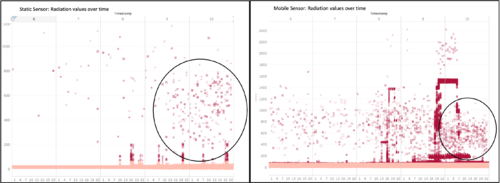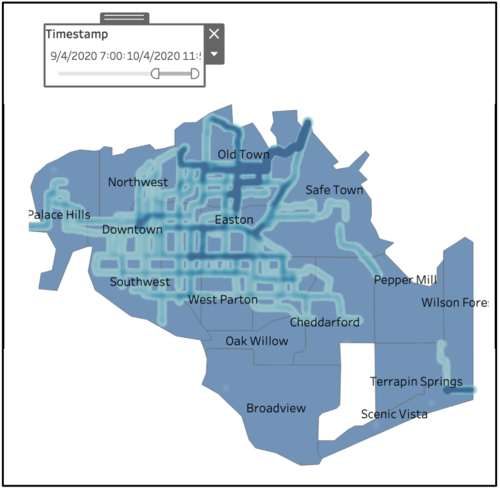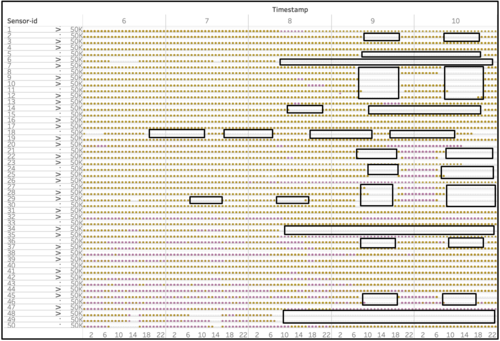IS428 AY2019-20T1 Assign Sean Chai Shong Hee Q5
This section will answer questions for Mini Case 2
Question 5
Data Analysis
For Mini Case 2, I analysed the data mainly as a static collection.
Analysing data as a static collection was particularly useful in this case as it was easier to gather insights based on patterns and trends. With a dynamic stream of data, data is continuous being added to your visualisation, which makes it difficult to determine relationships and patterns.
I was able to see with certainty how radiation values varied over the 4 days, and most observations made required looking at how one factor affected another.
Using a dynamic stream of data was useful when I wanted to determine the path of travel of contaminated cars over time. I could visualise by changing the time slider the exact path of the contaminated car.
Ultimately, analysing data as a static collection allowed me to have a clearer picture of gaps in data (such as visualising the many missing values in the data for mobile sensors). I was able to relate outcomes of radiation leakage to their causes when analysing the data as a static collection.


